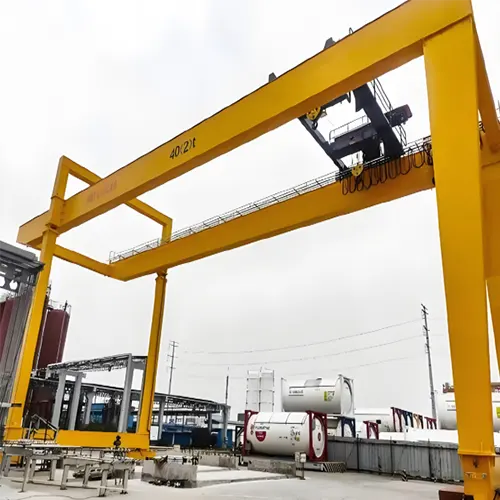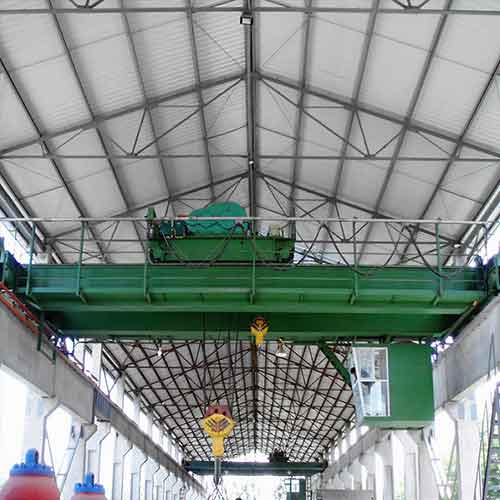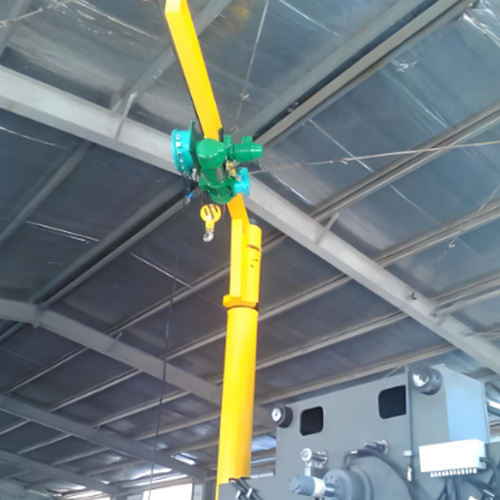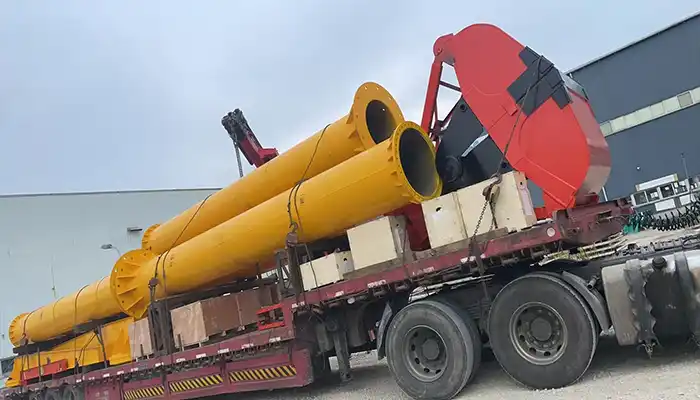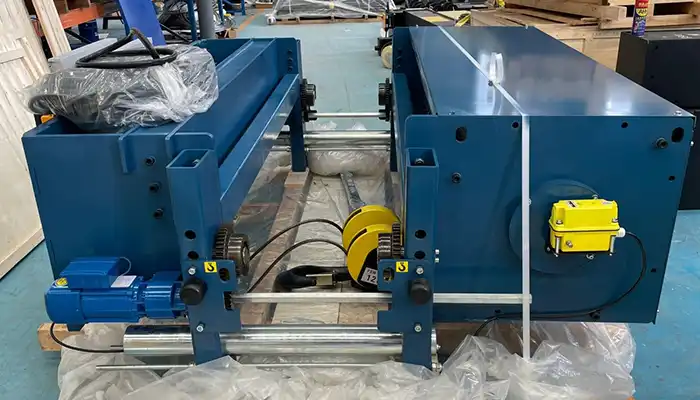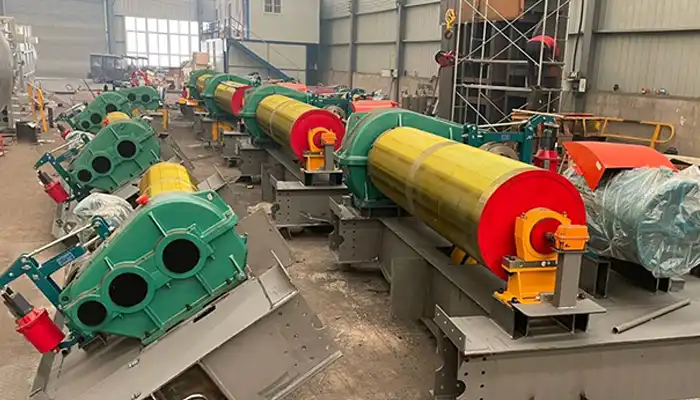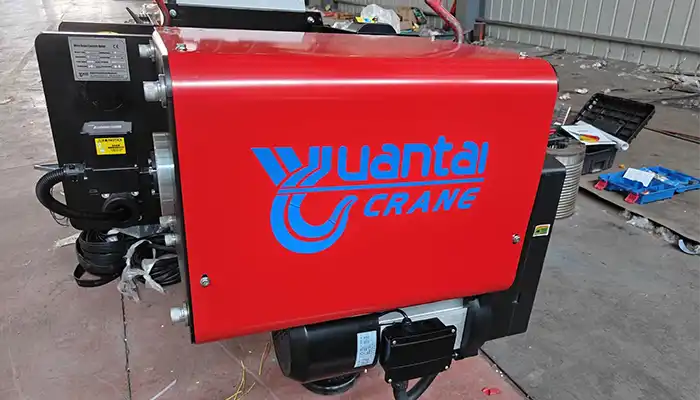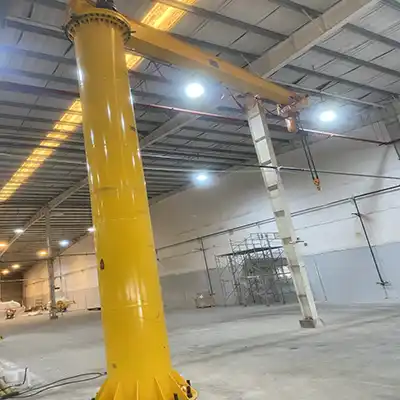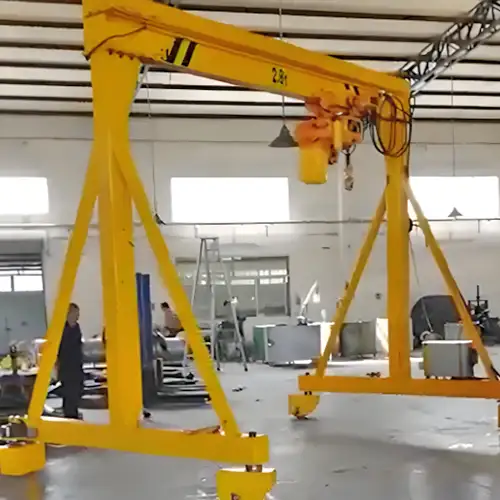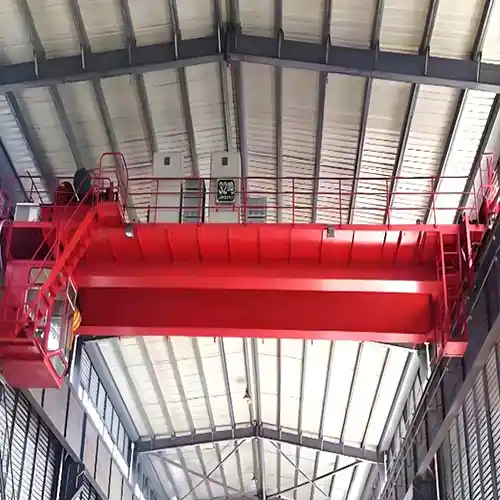Choosing the Right Explosion-Proof Crane for Offshore Platforms
A guide to selecting the best explosion-proof crane, focusing on safety, load capacity, durability, and long-term efficiency.
Category: Featured
Your Trusted Explosion Proof Crane Manufacturer & Supplier
Choosing the Right Explosion-Proof Crane for Offshore Platforms
A guide to selecting the best explosion-proof crane, focusing on safety, load capacity, durability, and long-term efficiency.
Why Offshore Platforms Need Explosion-Proof Cranes
Offshore oil and gas platforms operate in hazardous environments. Flammable gases, vapors, and fine particles are always present. A single spark from standard equipment can lead to an explosion. That's why explosion-proof cranes are essential.
- Eliminating Ignition Risks – These cranes are designed with sealed electrical components and non-sparking materials to prevent sparks.
- Operating in High-Risk Zones – Offshore platforms have classified hazardous zones, and only certified explosion-proof equipment can be used in these areas.
- Maintaining Safety in Extreme Conditions – High winds, saltwater exposure, and heavy loads add more challenges. Explosion-proof cranes ensure safe lifting despite these risks.
Lifting operations are frequent on offshore platforms. From moving drilling equipment to handling maintenance tools, a reliable explosion-proof crane is a must. It ensures smooth operations while keeping workers safe from potential disasters. Click to learn more on industrial overhead crane for oil and gas industrial sectors.
The Importance of Choosing the Right Crane
Not all explosion-proof cranes are the same. Selecting the wrong one can lead to safety risks, inefficiencies, and unexpected costs. The right crane makes a difference in three key areas:
- Safety – A well-chosen crane reduces explosion risks and enhances workplace security. Features like emergency stop systems, spark-resistant materials, and overload protection prevent accidents.
- Efficiency – Smooth and precise load handling speeds up operations. A crane that matches the platform's needs helps avoid delays and unnecessary downtime.
- Operational Costs – Investing in the right crane minimizes maintenance expenses, prevents costly breakdowns, and extends equipment lifespan.
A poor choice means frequent repairs, unexpected shutdowns, and potential safety violations. On an offshore platform, that's not just an inconvenience—it's a major risk. That's why choosing the right explosion-proof crane is a decision that should be made with care.
Explosion-Proof Cranes
What Makes a Crane Explosion-Proof? Explosion-proof cranes are specially designed to operate safely in hazardous environments. Offshore oil and gas platforms are filled with flammable gases and vapors, meaning any spark or heat source could trigger an explosion. Standard cranes aren't built for these conditions, but explosion-proof cranes are.
Key design features that make a crane explosion-proof:
- Sealed Electrical Components – Electrical sparks are a major ignition risk. Explosion-proof cranes use fully enclosed motors, wiring, and control panels to prevent exposure to hazardous gases.
- Non-Sparking Materials – Moving parts and friction points use special alloys that won't create sparks, reducing ignition risks.
- Anti-Static Features – Some models have grounding systems to prevent static electricity buildup.
- Temperature Control – These cranes ensure that all parts operate within safe temperature limits to avoid heat-related ignition.
Explosion-proof cranes must also meet strict safety standards:
- ATEX (Europe) – Ensures the crane is safe for use in explosive atmospheres.
- IECEx (Global) – Confirms international compliance with explosion-proof requirements.
- NEC (U.S.) – Regulates electrical safety in hazardous locations.
Without proper certification, a crane cannot be used in classified hazardous offshore zones.
Types of Explosion-Proof Cranes for Offshore Use
Different offshore operations require different crane types. Here are the most common explosion-proof cranes used on oil and gas platforms:
- Explosion-Proof Gantry Cranes – Ideal for platforms needing mobility. These cranes move on rails or wheels, allowing flexible lifting operations across different areas. Great for loading and maintenance tasks.
- Explosion-Proof Overhead Cranes – Designed for fixed lifting in a specific location. They handle heavy loads efficiently and are often used in machinery rooms or drilling zones.
- Explosion-Proof Jib Cranes – Compact and space-saving. These cranes are perfect for tight spaces where a full gantry or overhead crane isn't practical. Often used for localized lifting near workstations.
Choosing the right type depends on space availability, load requirements, and operational needs. Each type plays a critical role in offshore lifting while maintaining the highest level of safety.
Key Factors to Consider When Selecting an Explosion-Proof Crane
Choosing the right explosion-proof crane for an offshore platform requires careful consideration. Safety, performance, and durability are top priorities. Here's what buyers need to evaluate before making a decision.
Safety and Compliance
Safety is non-negotiable in offshore environments. Explosion-proof cranes must meet strict international standards to prevent ignition risks.
- ATEX and IECEx Certification – Ensure the crane is certified for explosive atmospheres. ATEX is required in Europe, while IECEx is the global standard.
- Built-in Safety Features – Look for emergency stop systems, anti-collision sensors, overload protection, and explosion-proof enclosures for electrical components.
- Hazardous Zone Classification – Offshore platforms have different zones based on explosion risk. The crane must be rated for the appropriate zone.
Without the right certification, a crane cannot legally or safely operate in hazardous offshore conditions.
Load Capacity and Lifting Requirements
The crane must match the platform's lifting needs. Selecting the wrong capacity can lead to inefficiencies or safety hazards.
Understanding Weight Limits – Cranes are rated for maximum load capacity. Exceeding this can damage the crane and pose safety risks.
Load Cycles and Duty Ratings – Offshore cranes may operate frequently under high loads. Choosing a model designed for high-duty cycles ensures longevity.
Single-Girder vs. Double-Girder
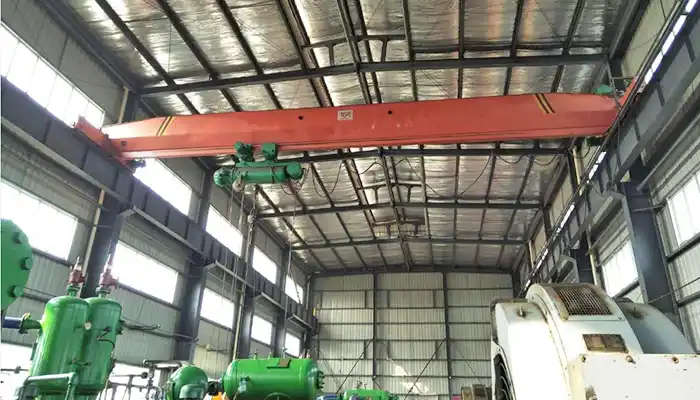
Single-girder cranes with explosion proof design are lighter and more compact, ideal for moderate loads.
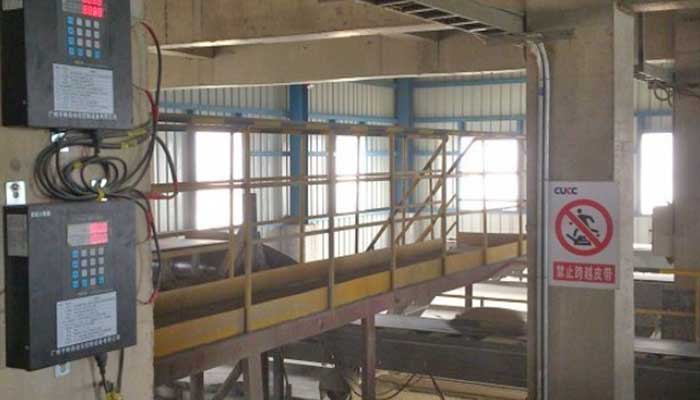
Double-girder explosion proof cranes offer greater strength and stability for heavy lifting operations.
Matching the crane type with operational demands is crucial for safe and efficient performance.
Durability and Environmental Resistance
Offshore platforms face extreme conditions. Cranes must withstand constant exposure to harsh weather and corrosive environments.
- Corrosion-Resistant Materials – Stainless steel or special coatings protect against saltwater damage.
- Sealed Components – Prevents moisture, dust, and debris from affecting performance.
- Resistance to Extreme Weather – Offshore cranes must operate in strong winds, rain, and fluctuating temperatures without performance issues.
A poorly protected crane will deteriorate quickly, leading to costly repairs and downtime.
Mobility and Space Constraints
Offshore platforms have limited space. The crane must fit within the available area while providing the required lifting range.
Travelling Travelling vs. Portable Gantry Cranes –

Rail travelling gantry crane cranes with explosion proof designs are ideal for heavy-duty operations in one location.
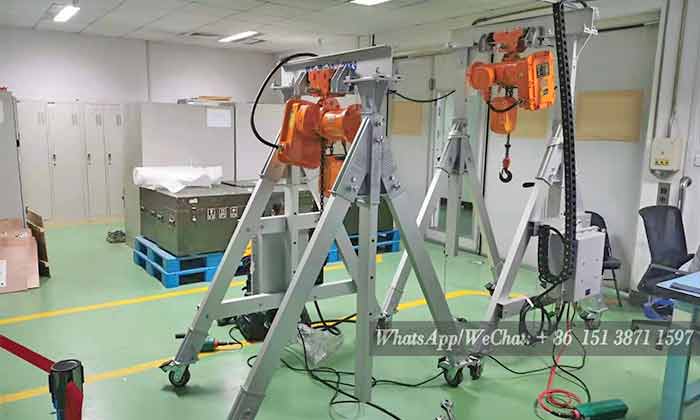
Portable Aluminum Explosion Proof Cranes offer flexibility, moving to different areas as needed.
Compact Designs – Space-saving options, such as jib cranes, help optimize limited deck areas.
Customized Configurations – Some cranes can be adapted to specific platform layouts, ensuring maximum efficiency without compromising safety.
Proper planning ensures the crane fits the workspace without obstructing other operations.
Ease of Maintenance and Downtime Prevention
Offshore environments make maintenance challenging. A good crane should be easy to inspect and repair.
- Predictive Maintenance Features – Remote monitoring, IoT integration, and real-time diagnostics help detect issues before they cause failures.
- Accessibility of Parts – Easily replaceable components reduce downtime and repair costs.
- Minimal Lubrication Requirements – Some explosion-proof cranes use self-lubricating bearings, reducing the need for frequent maintenance.
A well-maintained crane improves operational efficiency and prevents unexpected shutdowns.
Selecting an explosion-proof crane is more than just picking a model. Buyers must consider safety standards, lifting capacity, durability, space limitations, and maintenance ease. Investing in the right crane ensures smooth operations, protects workers, and reduces long-term costs.
Cost Considerations and Long-Term Investment
When choosing an explosion-proof crane for offshore use, cost is a key factor—but it shouldn't be the only consideration. Balancing upfront costs with long-term savings can ensure that you get the best value for your investment.
Balancing Cost and Performance
The initial price tag of an explosion-proof crane can be high, but it's essential to evaluate the long-term savings that come with investing in quality equipment.
- Evaluating Initial Investment vs. Long-Term Savings – While cheaper cranes may seem like an attractive option, they often come with higher maintenance costs and shorter lifespans. Quality cranes, though more expensive initially, tend to last longer and require fewer repairs, which reduces long-term operational costs.
- Energy-Efficient Options – Choosing an energy-efficient crane can drastically lower operational costs. Look for cranes with optimized motor systems, reduced power consumption, and regenerative braking systems that save energy during operation. Lower energy costs contribute directly to reducing the total cost of ownership over time.
While the upfront investment may be higher for a high-performance crane, the reduced operating costs and increased reliability make it a cost-effective choice in the long run.
Avoiding Hidden Costs
There are several hidden costs that can creep up if you're not careful. These often result from poor planning or choosing a crane that isn't perfectly suited for offshore conditions.
- Maintenance – Offshore cranes require regular maintenance to ensure safe and reliable performance. Budgeting for routine checks, oil changes, and part replacements is essential. Unexpected maintenance issues can lead to costly downtime, so it's better to opt for cranes with long-lasting components and easily accessible parts.
- Certification Renewals – Explosion-proof cranes must be regularly inspected and certified to meet safety standards like ATEX and IECEx. The costs of certification and potential upgrades should be considered when planning your budget.
- Spare Parts Availability – If a crane model is outdated or from a lesser-known manufacturer, sourcing spare parts can be a challenge. Always ensure that the crane model you select has readily available replacement parts, and that the manufacturer offers reliable support for repairs.
Factoring in these hidden costs will help you avoid surprises and keep your offshore lifting operations running smoothly.
Investing in the right explosion-proof crane isn't just about choosing the cheapest option. By carefully balancing the initial cost with long-term performance and energy savings, you'll get better value over time. Additionally, being mindful of ongoing maintenance, certification renewals, and parts availability ensures that you stay ahead of hidden costs, maximizing your crane's lifespan and operational efficiency.
Making the Final Decision: Steps for Buyers
Choosing the right explosion-proof crane is a significant investment, so it's important to follow a careful process to ensure you make the best choice. Here are the key steps to guide you in making a well-informed decision.
Assessing Your Offshore Platform's Needs
Before purchasing a crane, you must thoroughly understand the requirements of your offshore platform. This will help you choose a crane that fits your specific operational needs and safety standards.
- Evaluating Operational Demands – Consider the type of loads you'll be lifting, the frequency of operations, and the lifting capacity required. This will help you determine if you need a single-girder, double-girder, or portable crane.
- Safety Requirements – Different areas of the platform may have varying levels of risk. Make sure the crane you choose meets the required safety standards for the specific hazardous zones on your platform.
- Space Constraints – Offshore platforms often have limited space, so choose a crane that fits within the available area while offering the flexibility and capacity needed for your operations.
By evaluating these factors, you can ensure the crane is the right fit for your offshore operations.
Working with Reliable Manufacturers and Suppliers
Selecting a reputable manufacturer is one of the most important steps in choosing an explosion-proof crane. The supplier's reliability directly impacts the crane's performance, durability, and safety.
- Proven Track Records – Choose a supplier with a history of providing high-quality explosion-proof cranes for offshore use. Look for positive customer reviews and case studies that demonstrate successful installations.
- Certifications and Compliance – Ensure the supplier is certified and complies with safety standards like ATEX, IECEx, and local regulations. Only certified cranes can be used safely in hazardous environments.
- After-Sales Support – A good manufacturer should offer strong after-sales service, including training, maintenance support, and warranty options.
Partnering with a trustworthy supplier reduces the risk of choosing subpar equipment and ensures your crane performs reliably.
Requesting Customization Options
Offshore platforms come in many shapes and sizes, so a one-size-fits-all approach may not always work. Customizing your crane to meet specific operational needs can enhance safety, efficiency, and performance.
- Tailoring to Specific Offshore Applications – Discuss the layout of your platform and your specific lifting needs with the manufacturer. Custom options like variable lifting speeds, specialized hoists, or tailored reach can improve operational efficiency.
- Adapting to Unique Environmental Conditions – If your platform faces extreme weather, saltwater exposure, or other unique challenges, make sure the crane is built to withstand those conditions. Choose corrosion-resistant materials and ensure the crane is suitable for the temperature and humidity of your operating environment.
- Future-Proofing – Consider future upgrades or changes in your platform's needs. Request cranes with flexible configurations that can be adapted or upgraded to meet evolving demands.
Customization ensures your crane is perfectly suited for the unique challenges of your offshore operations.
Making the final decision when selecting an explosion-proof crane involves more than just comparing prices. By thoroughly assessing your platform's needs, working with reliable suppliers, and considering customization options, you can ensure that you invest in a crane that enhances safety, efficiency, and long-term operational success.
Conclusion
Choosing the right explosion-proof crane for offshore platforms is a critical decision that directly impacts safety, efficiency, and operational costs.
To make an informed choice, it's essential to consider the following:
- Safety and Compliance – Ensure the crane meets required safety standards like ATEX and IECEx to operate in explosive environments.
- Load Capacity and Lifting Requirements – Match the crane's capacity to your platform's operational demands and load cycles.
- Durability and Environmental Resistance – Select cranes with corrosion-resistant materials and components that can withstand harsh offshore conditions.
- Mobility and Space Constraints – Evaluate whether a fixed or portable crane is best suited for your platform's layout.
- Ease of Maintenance and Downtime Prevention – Prioritize cranes with predictive maintenance features and easy-to-replace parts to minimize operational disruptions.
Investing in the right explosion-proof crane not only ensures safe and reliable operations but also reduces long-term costs by minimizing maintenance needs and downtime. By carefully considering safety, performance, and cost factors, buyers can make an investment that will serve their offshore platform for years to come.
Main Projects
Related Products
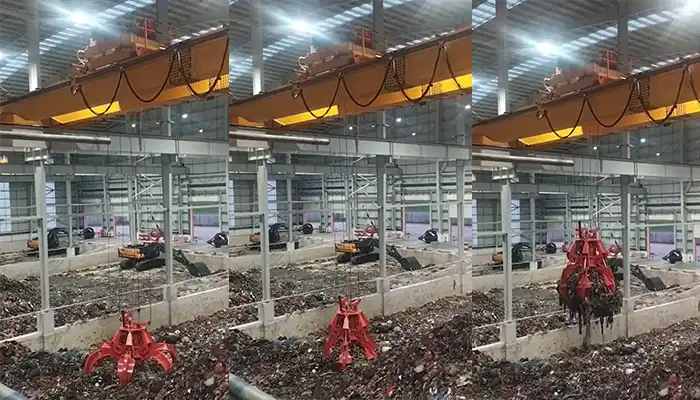
Supplied three grab bucket crane kits to Indonesia, enhancing garbage handling efficiency with high load capacity and reliable performance.
Free consultation to Confirm Parameters & Specifications and Get
Latest Crane Price & Crane Rate.
- Types of overhead cranes : _______?
- Optional: Overhead travelling crane, goliath gantry crane,Slewing jib crane, Single girder or double girder crane,small portable crane or kbk crane, etc.
- Capacity of overhead crane: _______?
- Optional: 0.25ton, 0.5 ton, 1 ton, 2 ton, 3ton, 5 ton, 10 ton,15ton, 20ton, 25 ton, 30ton,35ton, up to 550ton, etc.
- Crane span & lifting height : _______?
- Crane travelling length : _____?
- Control of overhead crane:_______?
- Optional: pendant/ remote/cabin control
- Voltage supply of overhead crane:_____?
- Eg,: 380V50/60HZ,3Phase or others,etc.
- Application/usage of crane:_______?
- Eg,: Steel mill, ,injection mold, cement,stone, concrete,granite, general manufacturing, etc.
Just leave a message via the contact form and our hoist and crane engineer will contact you with in 24working hours.
Get In Touch
